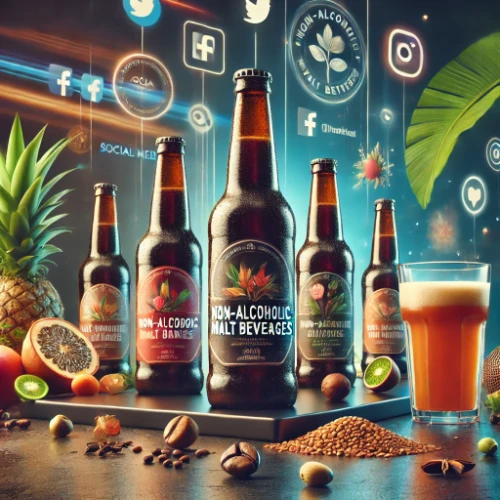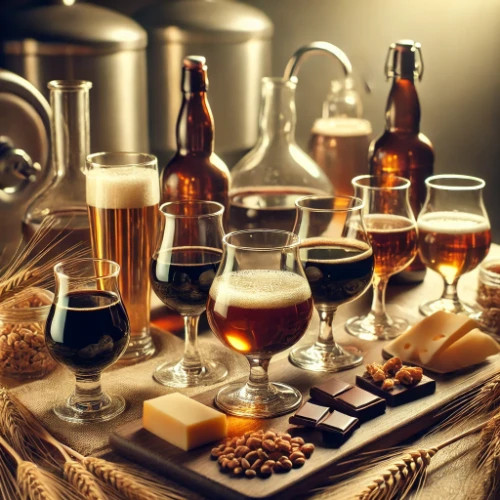The market for non-alcoholic malt drinks is on a rapid rise, driven by consumer demand for healthier, low-alcohol alternatives. By 2032, the global market is projected to grow from USD 32.78 billion in 2023 to USD 59.27 billion, reflecting a CAGR of 6.80%. This article will break down the key trends and growth factors shaping the future of these beverages.
What’s Driving the Demand for Non-Alcoholic Malt Drinks?
Several factors are contributing to the increasing popularity of non-alcoholic malt drinks. One of the biggest drivers is the global trend toward healthier lifestyles. Consumers today are more conscious of what they consume and are moving away from alcoholic beverages in favor of low-alcohol or non-alcoholic options. Malt drinks, with less than 0.5% alcohol, offer the satisfaction of a beer-like experience without the downsides of alcohol.
In addition to being low in alcohol, these drinks often come enriched with vitamins like B6 and antioxidants, which can boost health by improving blood circulation. These health benefits make non-alcoholic malt drinks a preferred choice for health-conscious individuals.
Market Segments: Flavors and Packaging
The market is diverse, offering various flavors and packaging options that cater to different consumer preferences. Some of the popular product categories include:
- Carbonated drinks
- Dairy-based malt drinks
When it comes to flavors, non-alcoholic malt drinks are available in both traditional and unique varieties:
- Classic malt
- Fruity flavors such as apple, peach, and citrus
- Coffee and cocoa-inspired drinks
These flavor options allow brands to cater to a broad audience. Furthermore, the beverages come in different packaging forms such as:
- Bottles
- Cans
- Liquid cartons
This variety in packaging makes it easy for consumers to enjoy their favorite malt drinks on the go or at home.
Growth Factors Behind the Non-Alcoholic Malt Drink Boom
- Health and Wellness Trends
As more people look for healthier alternatives to alcohol, non-alcoholic malt have become increasingly popular. Their low alcohol content, combined with added health benefits, makes them an ideal option for consumers seeking balance in their lifestyle. - Wide Range of Flavors
The availability of various flavors, from traditional to fruity or coffee-based, has expanded the market. Brands continue to innovate by introducing new flavor profiles that appeal to different consumer tastes. - Urbanization and Income Growth
Rising disposable incomes and urbanization in regions such as Asia-Pacific have fueled the demand for premium beverages. As more consumers can afford healthier options, the demand for non-alcoholic malt drinks continues to grow.
The Impact of COVID-19 on the Market
The pandemic significantly disrupted the non-alcoholic malt market. During the height of the lockdowns, production was halted, and supply chains were disrupted. These drinks were not considered essential, which delayed their manufacturing and led to product shortages. However, with the easing of restrictions, production has resumed, and the market is bouncing back. The pandemic also highlighted the growing consumer preference for wellness products, further driving demand for non-alcoholic malt drinks.
Regional Insights: Where Is the Market Growing?
The non-alcoholic malt drinks market is seeing the fastest growth in regions like Asia-Pacific, driven by urbanization and an increasing awareness of health and wellness. While North America and Europe currently lead the market in terms of revenue, the Asia-Pacific region is expected to witness the highest growth rate over the next decade. With more consumers in developing economies seeking healthier alternatives, the demand for these beverages is likely to skyrocket.
Key Players in the Market
The non-alcoholic malt drinks market is highly competitive, with several key players dominating the space. Some of the major companies include:
- Nestlé
- Malta Goya
- Coca-Cola
- Ceres Brewery
- Royal Unibrew A/S
These companies are continually innovating, introducing new flavors and packaging options to meet growing consumer demand. Their ability to adapt to changing preferences will be critical for continued market leadership.
The Future of Non-Alcoholic Malt Drinks
Looking forward, the future of non-alcoholic malt appears bright. With the market expected to nearly double by 2032, there is plenty of room for innovation and growth. Brands that can offer unique flavors, while continuing to highlight the health benefits of these beverages, will be well-positioned for success.
Find more about this at zionmarketresearch.com
Related Reading for Malt Enthusiasts
The Rise of Malt Drinks in Africa
Uncover the factors driving the popularity of non-alcoholic malt beverages in Africa and their impact on the global market.
Non-Alcoholic Malt and Holistic Health
Dive into the wellness benefits of non-alcoholic malt drinks and how they fit into a balanced, health-conscious lifestyle.
Non-Alcoholic Malt Drinks Market: Trends and Innovation
Learn about the latest market trends, emerging flavors, and packaging innovations shaping the future of non-alcoholic malt beverages.




